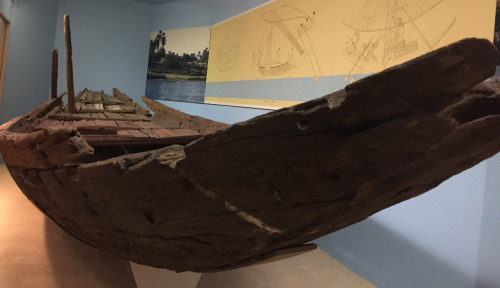Egypt on the Nile

“Egypt on the Nile” is a curatorial project that is tasked with rethinking the display of an Old Kingdom boat from Dashur, Egypt within its surrounding galleries in Walton Hall, part of Pittsburgh’s Carnegie Museum of Natural History (CMNH). For the past two years I have been a Digital Humanities advisor for this NEH-supported project, which is directed by Erin Peters.
What I like most about the project is the way it aims to contextualize a wide variety of data points and kinds of evidence with a narrative about environmental changes over time, using the Nile River as a central theme. The CMNH has a unique collection: art objects such as ceramics, jewelry, and painted sarcophagi may be displayed alongside animal and plant specimens. The time periods represented in the museum’s collections range from the Predynastic through the Old, Middle, and New Kingdoms, Greco-Roman periods (including Byzantine), and even modern Egypt.
My role has been to help the team navigate the possibilities of digital projects in a gallery that is sure to attract visitors of all ages, based on the enthusiasm for Ancient Egypt in popular culture. A priority is to make sure interactive or immersive elements enhance, rather than distract, from the museum objects. Another challenge is discerning not only the best implementation of technology, but its stewardship long-term (including equipment, space, and inevitable software and hardware updates and maintenance).
Thinking of ancient material augmented by technology in a museum setting highlights a number of research questions for museum studies: How to we use research and data to construct a narrative that will help people understand and interpret the past? How can knowing about environmental change over time give people a richer understanding of our own climate and natural resources? How can digitized, immersive experiences enhance our understanding of material evidence?